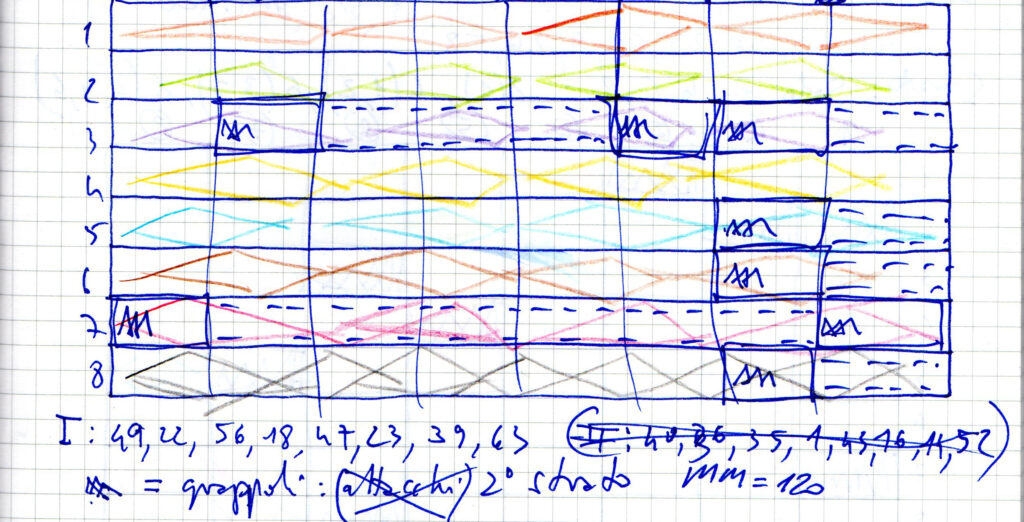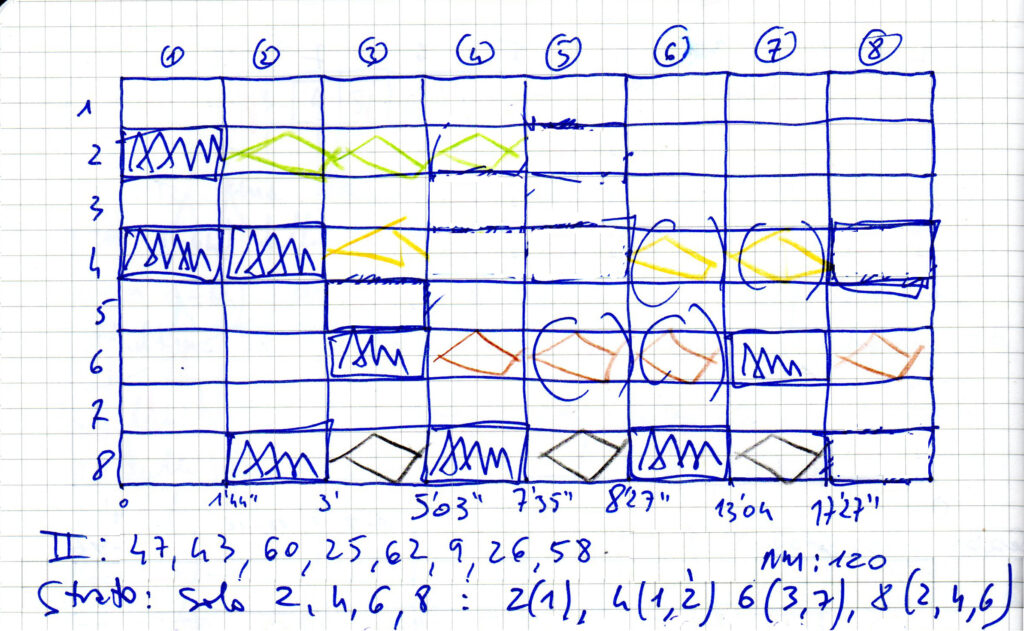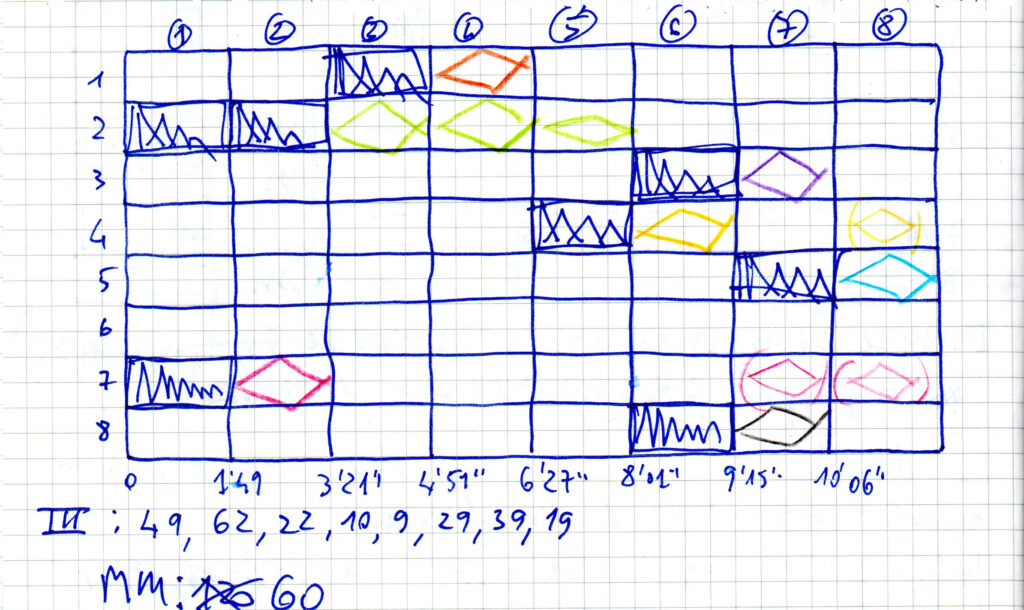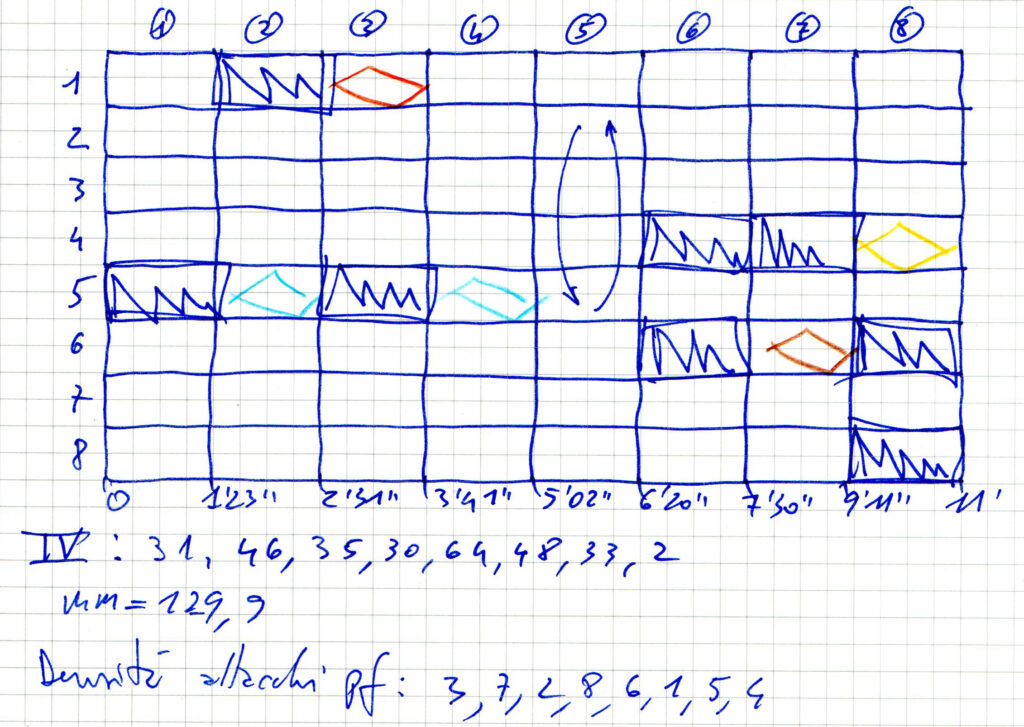Libro I (2022) electroacoustic music [5′ 24″]

Libro II (2022) electroacoustic music [18’ 50”]

Libro III (2022) electroacoustic music [11’ 03”]

Libro IV (2022) electroacoustic music [11’ 09″]

I always pay great attention to what is generally called the pre-compositional phase. It is an attitude I developed from my acquaintances with conceptual artists in the 70s and John Cage’s music. The ‘cambiamento’ (change) of the title refers to Music of Changes (1951) for piano, the first work where the American composer used extensively his chart system based on I Ching, the ancient Chinese book of oracles organized in 64 hexagrams. From Music of Changes I took the formal division into four Books and their durations, but above all the inspiration for the non -intentional generative process of the sound events in my composition.
The technique adopted is that of convolution. It starts with the deconvolution of short fragments (about 1 ‘) from instrumental music of the II post -war period with ‘burst’ of instrumental sounds. So I get impulse responses (IR) that I will use for the convolution with 8 different types of materials (Ecc), each with 8 different sounds:
- instrumental short sounds
- concrète impulsive sounds
- electronic impulsive sounds
- instrumental + concrète impulsive sounds
- instrumental + electronic impulsive sounds
- instrumental continuous sounds
- concrète continuous sounds
- electronic continuous sounds
The IRs are organized in 4 ‘mobile’ charts (one for each Book) of 8 x 8, while the Eccs in a single 8 x 8 ‘immobile’ matrix that is used for all 4 Books. The product of these two matrices therefore gives me 4096 possible structures for each Book. End of Theory.
The Practice: the Eccs and IRs randomly extracted, with variable density between 1 and 8, will generate through convolution the sound events to be placed in time according another random choice. While the percussive nature of the piano is just evoked in the first two Books – each sound event is like a trail, a refraction of the piano gestures on a ‘sound prism’ (“Duration, color, speed focus” writes Cage in his notebook) – in Books III and IV we focus more and more on David Tudor’s piano.
In 2024 the John Cage Trust and Edition Peters/Wise Music gave the permission to perform simultaneously Music of Changes and Teoria e pratica del cambiamento.

